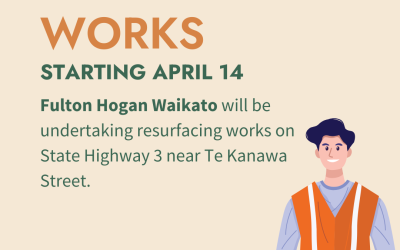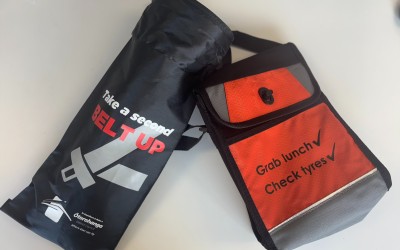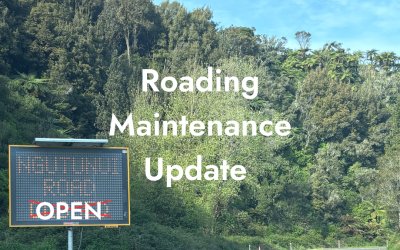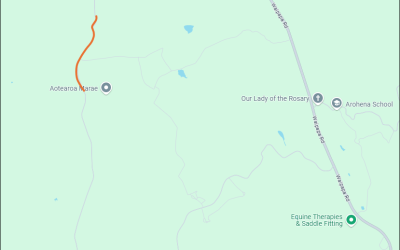How do we plan road maintenance work?
Regular maintenance on the roads and footpaths is completed in the Ōtorohanga District, to reduce the need for roading repairs.
Every month, our Roading Team complete inspections together with representatives from the maintenance contractor, Inframax, on a rotational area basis.
The Ōtorohanga District is divided into 9 geographical areas and each of these areas receive some of the maintenance work each month, based on the type of maintenance scheduled for that month. Each area receives all required maintenance in a 12-month period.
Over and above this, the maintenance is done as required after extreme weather or other events, through service requests and ad-hoc requirements.
How do we decide what gets fixed when?
We determine what roads need to be fixed using the New Zealand Transport Agency guidelines for One Network Road Classification (ONRC). The ONRC is a classification of the strategic importance of a road for that area. The roads that ODC are responsible for are Primary and Secondary Collectors (our major roads) and the majority are Access Roads and Low Volume Roads. Levels of Service (LoS) are worked out for each road classification. This means that funding is used to maintain the roading assets through a planned strategy in the right areas that will benefit the majority of road users in a safe and sustainable manner.
What work is carried out?
We carry out a significant amount of work on your roads over the course of the year including:
- Carriageway resurfacing and maintenance works
- Footpath resurfacing and maintenance works
- Kerb and Channel replacement and maintenance works
- Repairing bridges, roadside walls and seawalls
A number of other regular activities are also carried out during the year including:
- Street cleaning
- Graffiti removal
- Litter collection
- Vegetation maintenance on banks
- Road treatment types
- Chip sealing - for skid resistance and waterproofing road surfaces
- Slurry sealing - to fix irregular surface textures
- Asphalt paving - used on high-traffic roads or where roughness exceeds acceptable levels
- Crack sealing - prevents water from getting into cracks, and below road surfaces
Unplanned works
From time to time, we will carry out works on the roads that are not planned at the beginning of the year. Types of unplanned works include response to issues raised by the public, repair of minor defects like potholes, full drains etc., cleaning up after events like storms or slips and minor general maintenance activities.








